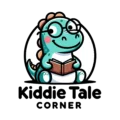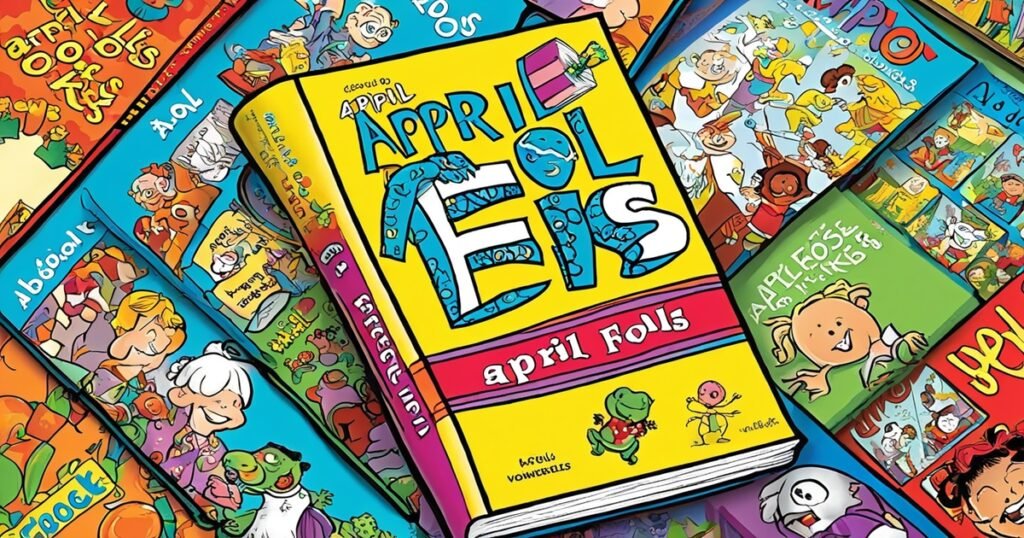Children carry a treasure trove of vibrant imaginations, often blooming into captivating stories and narratives. Frequently, the question arises, can kids publish books? The answer has seen significant transformation over the years, with more affirmative nods in the present era. Children, today, are not confined to the role of avid readers alone; they are stepping stones to become young authors and child writers, pushing boundaries and breaking stereotypes.
Let’s recall the 1960s, when Dorothy, a mere four-year-old, held the title of being the youngest child to pen down a published book. Fast forward to today, as we progress in the digital age, the opportunities for child writers have exponentially increased. While younger kids may require assistance from adults to navigate the intricate pathways of book publication, teenagers can be more involved, albeit with some adult supervision. The consensus being, publishing a book, despite being a demanding journey, is certainly achievable for any child with the right guidance. After all, it is the first of the many steps to publishing a book as a child.
Table of Contents
- Key Takeaways
- Young Authors and the Publishing World
- How Kids Can Get Their Books Published: The Initial Steps
- Can Kids Publish Books: Age Is Just a Number
- Traditional Publishing vs. Self-Publishing for Youth
- Overcoming Challenges: Legal and Editorial Considerations
- The Cost of Publishing: What Parents Should Expect
- The Promotional Journey: Marketing a Young Author’s Book
- Building the Foundation: Writing Resources and Tools for Child Writers
- Real Stories of Success: Case Studies of Youth Book Authors
- Steps to Publishing a Book as a Child: From Manuscript to Bookshelf
- Conclusion
- Source Links
Key Takeaways
- Publishing a book is a reachable goal for kids and teenagers alike.
- The digital age has broadened opportunities for aspiring child authors.
- Assistance from adults can be instrumental in navigating the publishing process.
- Successful child writers, such as Dorothy, provide inspiration to present and future young authors.
- Taking the initial steps to publishing a book as a child can lead to significant achievements.
Young Authors and the Publishing World
Never before in human history have we seen such an exciting escalation in the number of young authors making their mark in the literary world. Technological advancements in the children’s book publishing industry have significantly changed the landscape, creating new avenues and opportunities for young talents to explore their creativity and reach a worldwide audience with their words. Today, we will delve into the rise of children writing and publishing, the historical youngest published authors, and the ongoing changes in the children’s book publishing industry.
The Rise of Children Writing and Publishing
In recent years, we’ve seen a noteworthy upswing in the number of children writing and publishing their own works. They weave intricate stories, build fascinating worlds, and bring characters to life with a splash of color and creativity. It’s a testament to the remarkable imaginations and storytelling abilities these young authors possess, notably widening the demographic of published authors and making it a truly diverse and inclusive space.
Historical Youngest Published Authors
The annals of history bear testament to the extraordinary achievements of young authors. One such milestone dates back to the 1960s when a four-year-old named Dorothy cemented her place in literary history as the youngest published author. Her creative curiosity fueled her success, proving that age is not a factor if talent, creativity, and the right support are present.
Changes in the Children’s Book Publishing Industry
The past few decades have seen dramatic shifts in the children’s book publishing industry, paving the way for a new generation of authors. Constant innovation, technological advancement, and shifting publishing practices have expanded the horizon for children with a knack for writing. Digital platforms and self-publishing alternatives provide the flexibility to transform their stories into printed books, impacting their lives remarkably while inspiring thousands of others.
| Decade | Significant Changes in the Industry |
|---|---|
| 1960s | The youngest author, Dorothy, publishes a book. |
| 1990s | Surge in the number of children publishing books using traditional publishing methods. |
| 2000s | Advent of digital platforms simplifies self-publishing and extends reach. |
| Present | Massive growth in self-published children’s books, fueled by technological advancements and changing industry practices. |
How Kids Can Get Their Books Published: The Initial Steps
Focused steps take the creative brilliance of a child’s imagination to the tangible pages of a published book. In the journey of how kids can get their books published, the initial stages are indeed defining. These steps shape the scaffoldings upon which vivid worlds, intriguing plots, and unforgettable characters are built.
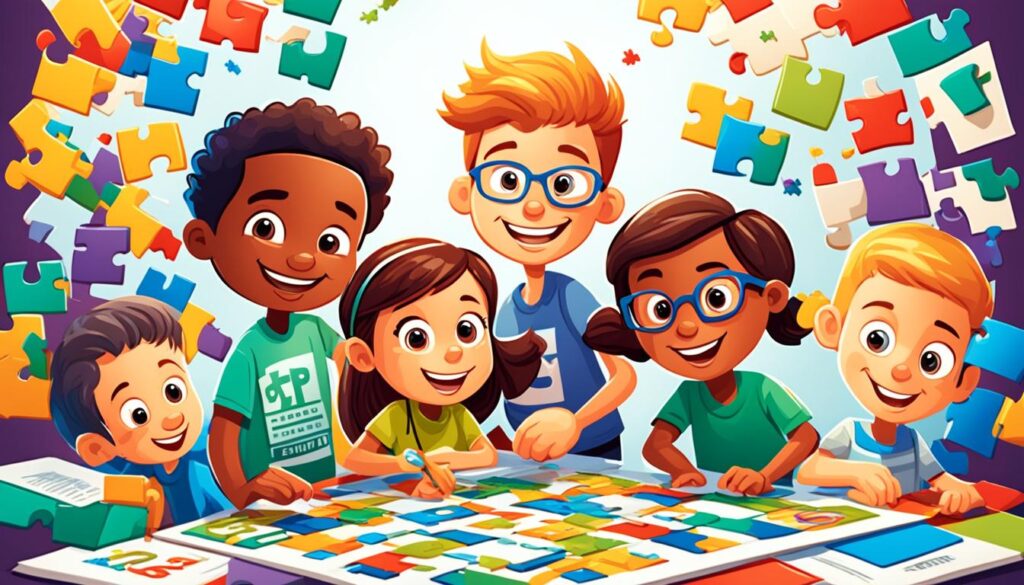
Supporting Child Writers Through the Creative Process
Children often narrate stories spinning in their minds, transforming everyday experiences into imaginative tales. Harnessing and nurturing these storytelling abilities is the first step to getting their books published. Like any budding talent, writing needs to be practiced, refined, and honed. Encouraging frequent writing, parents can help kids capture their creative thoughts and transform them into stories.
The creative writing process is dynamic and involves a variety of stages. Preliminary steps like:
- Drafting an outline
- Creating a story plot
- Developing characters
- Building the setting and narrative structure
are foundational elements that support child writers. They provide a structured framework to the story and a direction to their creative expression.
The Role of Parents and Guardians in Young Authors’ Publishing
Parents and guardians offer valuable guidance in this creative journey, encouraging child writers not only to pen down stories but also to further refine them. They help young authors perceive the story from a reader’s perspective, ensuring it’s engaging. Their role becomes indispensable when it comes to:
- Revising: Editing for coherence, conciseness, and clarity.
- Proofreading: Checking for spelling, punctuation, and grammar errors.
- Feedback: Constructive critique to improve the narrative.
All these layers of refining a story significantly contribute to enhancing the final manuscript’s quality, preparing it for its publishing journey.
| Creative Writing Process | Parents’ Role |
|---|---|
| Drafting an outline | Providing structuring ideas |
| Building story plot and characters | Encouraging imaginative thinking and character development |
| Revising the story | Ensuring clarity and coherence in the narrative |
| Proofreading | Checking for grammar, punctuation, or spelling errors |
| Getting professional feedback | Arranging for constructive critiques and revision |
By comprehending these initial steps and responsibilities, parents can effectively support their young authors, making the dream of getting their books published a reality.
Can Kids Publish Books: Age Is Just a Number
The question of age in the context of publishing a book is often misunderstood as a limitation. However, this notion couldn’t be further from the truth. Under question like “can kids publish books?”, it is pertinent to note that age is just a number. The focus should be less about the numerical value and more about the maturity and capability to see a writing project through to the end.
Children are master story-weavers, their untamed imagination often creating extraordinary narratives. Whether they are pre-teens or teenagers, kids today have neat setups and resources to nurture these skills.
With proper guidance and salon, which traditionally comes from responsible adults, children can successfully engage in writing and move ahead to publish their works. The process, however rigorous and demanding for young minds, is ultimately similar to that of adults. It underscores the fact that talent and dedication to writing can absolutely culminate in publication, regardless of the author’s youth.
This being said, youth book authors should be ready for the ups and downs of this journey. There’s no sugar-coating the fact that it takes a significant amount of work to get published. However, these challenges become rewarding experiences that stimulate growth and build resilience in these young minds.
Here’s a simple depiction of the process undertaken by young authors:
| Process | Description |
|---|---|
| 1. Idea Generation | Young writers start their journey by brainstorming engaging story ideas and characters. |
| 2. Writing | Having materialized an idea, they proceed to develop a compelling narrative, bringing their characters to life. |
| 3. Editing and Revising | Once the initial draft is complete, young authors refine their work, making necessary changes to improve readability and coherence. |
| 4. Publishing | Finally, their edited work is ready for publication, marking the fruitful realization of their efforts. |
Children and teenagers, therefore, are not just consumers of stories but creators as well. By encouraging young authors, we allow the next generation to add value to the existing treasure trove of literature.
Traditional Publishing vs. Self-Publishing for Youth
As young authors put the finishing touches on their meticulously crafted manuscripts, a major decision awaits them – should they opt for traditional publishing or venture into self-publishing? Both paths come with their distinct advantages and challenges that could significantly impact the course of a young author’s publishing journey.

Understanding Publishing Options for Young Authors
The mainstream, traditional publishing channel usually involves submitting the manuscript to a publishing house or to a literary agent. If accepted, these professionals take care of the editing, design, production, marketing, and distribution of the book. In return, they get a share of the book’s sales. This can be an appealing route, especially given the prestige and professional support involved. However, competition is high, and not all manuscripts are accepted. It often involves a waiting period which can be discouraging for eager young authors.
Self-publishing presents a more hands-on opportunity for aspiring writers. The author is responsible for all aspects of the book’s creation and promotion. Thanks to modern technology, platforms like Amazon Kindle Direct Publishing and Salt are redefining how books are created and disseminated, making self-publishing more accessible. However, it can call for a sizeable investment of time, effort, and finances, with no guarantee of high sales. Nonetheless, for many young authors, the draw of complete creative control and the potential for larger profit margins outweigh the risks and challenges.
Why Some Young Authors Choose Self-Publishing
Young authors often show a preference for self-publishing over traditional methods. The reasons for this are multifold. The freedom and autonomy that self-publishing grants are unmatched. This control over all aspects of their book, including the cover design, pricing, and marketing strategy, can be appealing to many young, creative minds.
In addition to learning the art of storytelling, self-publishing can be a lesson in entrepreneurship, exposing youths to significant life skills such as financial planning, time management, and marketing strategy. It gives a firsthand experience of business production, sales, and customer service.
| Publishing Option | Pros | Cons |
|---|---|---|
| Traditional Publishing | Support and resources from professionals, prestige | Highly competitive, long waiting periods, less creative control |
| Self-Publishing | Full creative control, potential for larger profit margins | Requires more effort, time, and financial investment |
In conclusion, both traditional and self-publishing have their advantages and downsides. Deciding which path to take depends on a young author’s goals, resources, and preparedness to take on challenges. No matter the path chosen, the journey of writing and publishing a book is in itself a magnificently rewarding experience for any young author.
Overcoming Challenges: Legal and Editorial Considerations
The trajectory of publishing for young writers is strewn with challenges that go beyond the creative aspects. Two key areas where young authors may face hurdles are in legal matters, particularly surrounding copyright, and the extensive process of editing and revising their work. With informed guidance, these challenges can be navigated smoothly, leaving valuable learning opportunities embedded in the publishing journey.
Addressing Copyright and Legal Issues for Child Writers
Intellectual property rights are crucial in the world of book writing and publishing, safeguarding the author’s creations from unauthorized use. When it comes to minors, protecting their work becomes even more essential due to their vulnerable age. To ensure that young authors’ work is appropriately protected, an understanding of copyright laws and trademark protections is essential. With adult assistance, these laws can be demystified, addressing copyright issues effectively to uphold the authors’ rights.
Editing and Revising: The Quality Every Book Needs
Editing and revising are indispensable parts of the publishing process, shaping a raw manuscript into a polished piece of content. Iterative rounds of editing review the manuscript for narrative flow, clarity, grammatical correctness, and punctuations. This rigorous and meticulous process can be challenging for young authors but is undoubtedly a great learning opportunity. It instills in them the importance of precision and quality, vital editorial considerations in publishing. Ultimately, it is a blend of creativity, legal comprehension, and editing prowess that guides young authors successfully through the publication journey.
“Writing, regardless of the end result, is always a journey of self-discovery and growth.” – Anonymous
The Cost of Publishing: What Parents Should Expect
Delving into the world of kids self-publishing amidst the excitement of seeing your child’s story come to life in print, it’s important not to overlook the practical aspects; specifically, the cost of publishing. Considering your child’s book is a labor of love, a financial investment is inevitable. From hiring professional services to polishing the manuscript, costs can quickly accumulate.
This financial commitment may vary widely, based on a number of factors especially the length and complexity of the book. To assist in assessing an estimated budget, the following table breaks down some potential costs associated with publishing a child’s book:
| Services | Estimated Cost Range |
|---|---|
| Professional Editing and Proofreading | $500 – $1500 |
| Cover Design | $100 – $700 |
| Formatting | $100 – $300 |
| Printing | Varies based on print run and book specifications |
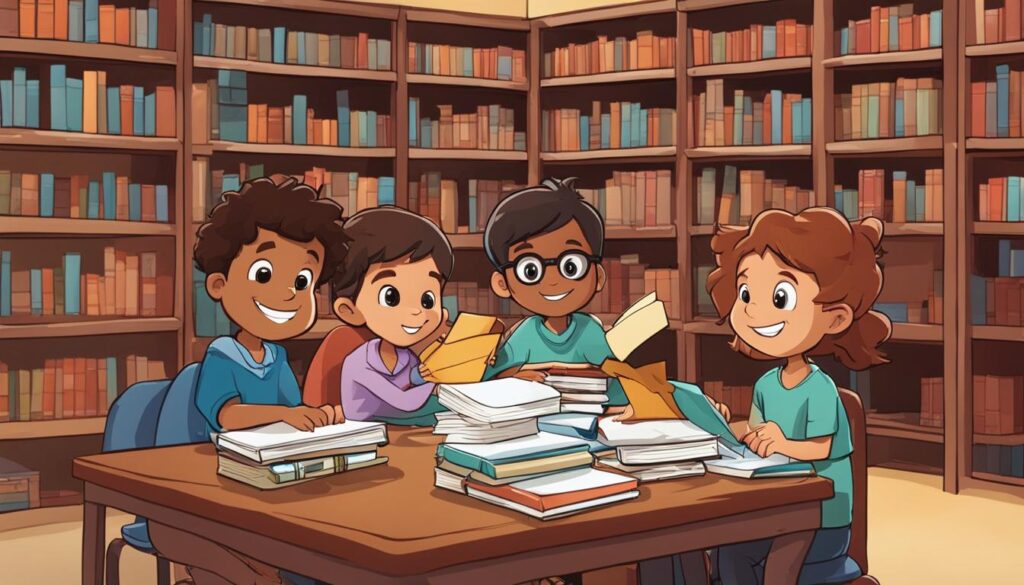
Note that these prices can fluctuate, and cheaper alternatives may be available for certain services. However, it’s critical to remember that quality often correlates with cost. A highly polished and professionally presented book may require a substantial investment, yet the rewards, including nurturing your child’s love for writing and instilling a sense of achievement, are priceless.
Parents and guardians contemplating stepping onto this path with their young authors must weigh the cost of publishing a book. Besides being an enriching experience for your child, it is also an undertaking that necessitates financial planning and commitment. Thus, creating a well-considered budget can ensure a smoother book publishing journey for parents and young authors alike.
The Promotional Journey: Marketing a Young Author’s Book
Embarking on a promotional journey is a critical aspect of a young author’s publishing experience. An effectively marketed book can become a significant driving force, fostering confidence and a sense of ownership in child writers. This critical journey creates a foundational pathway, establishing an audience for the author while promoting their creative work.
Fostering Confidence and Agency Through Promotion
When it comes to marketing a young author’s book, fostering confidence is as important as promoting the book. As young authors see their work being appreciated and acknowledged by readers, it uplifts their morale and boosts their confidence. This sense of accomplishment tends to encourage young authors to explore their creative boundaries and improve their skills further.
Additionally, involving young authors in the promotional activities allows them to gain firsthand experience of how the literary marketplace works, instilling a sense of agency in them. In long run, these acquired skills and experiences can foster a confident and sovereign author.
Networking and Building an Audience for Kids Self-Publishing
In order to establish a strong foothold in the market, young authors need to develop networking skills. Connecting with other writers, readers, and industry professionals broadens their perspectives and opens up new avenues for their growth.
Adopting several networking strategies, like participating in social media platforms, attending literary events, and book signings, can help young authors build a dedicated audience. Platforms like Storyjumper or Storybird can be incredibly helpful in this regard, offering young authors an opportunity to connect with readers and gain visibility in the competitive marketplace.
| Promotional strategies | Brief description | Benefit |
|---|---|---|
| Social media | Using platforms like Facebook, Instagram, and Twitter to share book updates, quotes, cover reveals, etc. | Ability to reach a broader audience and generate buzz |
| Book signings | Hosting events where the author signs copies of their book for audiences | Engaging directly with readers and creating a memorable experience |
| Joining platforms like Storyjumper or Storybird | Online communities specifically designed for young authors | Connecting with like-minded individuals and learning from one another |
Building the Foundation: Writing Resources and Tools for Child Writers
The journey of a young author begins with a strong foundation. The world of digital resources and tools has opened immeasurable doors for child writers, providing essential support for honing their craft.

Platforms like Storyjumper, Little Bird Tales, and Storybird have made it easier than ever for kids to engage with stories, create, and even publish their own digital books. These cutting-edge resources offer youngsters a platform to express their creativity, fostering their writing skills and storytelling acuity.
Moreover, interactive platforms such as ToonDoo guide children towards creating their own cartoons and comics. This unique, engaging avenue can then turn their rich, animated creations into published books, encouraging their artistic ingenuity.
“By providing child writers with the necessary tools, we’re not just fostering their current abilities, but laying a solid foundation for their future endeavors.”
Consistent engagement with writing activities, coupled with access to these innovative resources, sets the stage for youngsters to metamorphose into successful, established authors. And while the landscape of writing resources for kids continues to grow and evolve, so do their opportunities to build and expand their writing abilities.
- Engage with interactive storytelling platforms
- Create and publish digital books
- Develop visual narratives with cartoons and comics
- Turn creative projects into published works
In conclusion, when children are equipped with the right tools and resources, they gain the power to shape their own literary journey. From narrative creation to published digital books for kids, the world of writing unfolds to their young, imaginative minds, setting the cornerstone of their writing prowess and literary success.
Real Stories of Success: Case Studies of Youth Book Authors
In the world of literature, we find inspiring tales of published child authors, whose works serve as a beacon of potential to their peers. This cadre of youth book authors who have navigated the hurdles of the publishing world demonstrates what is possible when youthful creativity meets resilience. These journeys, brimming with valuable experiences, influence the narrative of writing and publishing at a young age.

Inspiring Tales of Published Child Authors
Often, the most moving narratives are those that emerge from the experiences of child authors. Their stories, depicted through unique lenses, not only entertain readers but also empower other children to discover their potential as writers. Here, we feature examples of these quintessential trailblazers, standing testament to the boundless possibilities of young talent.
| Author | Age at Publication | Published Work |
|---|---|---|
| Alejandro Fauré | 6 | “The Rose” |
| Jyoti Puri | 9 | “The Mysery of Bila Land” |
| Ana Déborah F. do Canto | 13 | “Paradise of Idleness” |
The Impact of Success on Young Writers
The impact of achieving early success in the literary world is multifold. Reaching this milestone can boost a young writer’s confidence, fostering a sense of accomplishment and motivation, as well as generating new opportunities to expand their creative horizons. The triumph of these youth book authors showcases the power of unwavering determination and the extraordinary outcomes it can yield.
“Success is not the key to happiness. Happiness is the key to success. If you love what you are doing, you will be successful.” – attributed to Albert Schweitzer
In summary, the inspiring tales of published child authors and the success they have achieved exhibit the sheer magnitude of potential within our youth. These narratives, forged through perseverance, creativity, and talent, serve as motivators for prospective young authors, shining a light on the path toward realizing their literary dreams.
Steps to Publishing a Book as a Child: From Manuscript to Bookshelf
Embarking on the journey to becoming a young published author is no small feat. Nevertheless, the fulfilling accomplishment of seeing one’s work come to fruition is an invaluable gain. The steps to publishing a book as a child revolve around creating captivating content, refining it, deciding on the publishing pathway, and initiating the necessary promotional efforts.
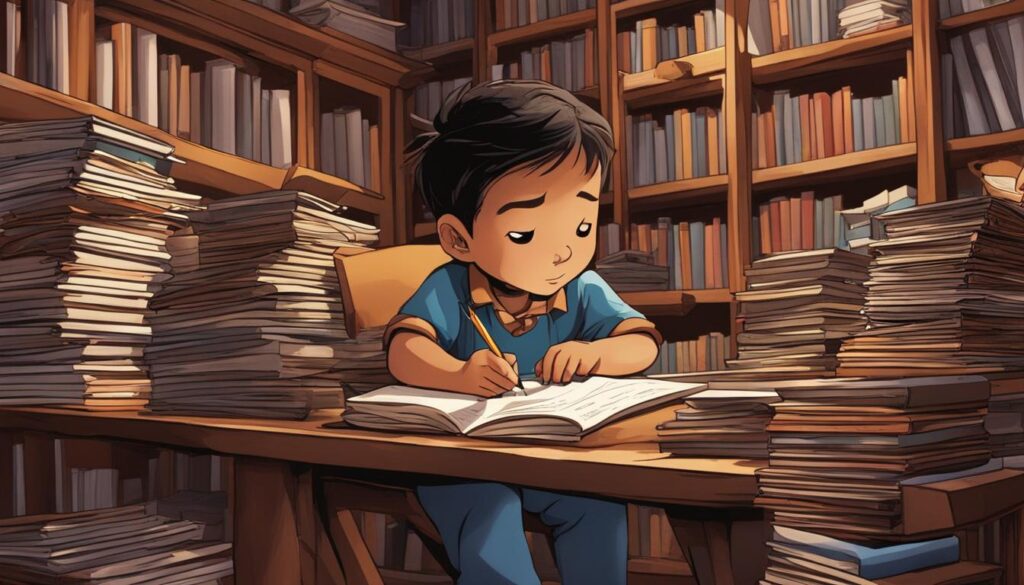
Indeed, the starting point for any young author is to craft a captivating story, turning their creative ideas into a compelling manuscript. The writing process needs to stay true to the authenticity of a child’s perspective, while also addressing their audience effectively.
Defining the audience that will relate most to the narrative is key to deciding the tone, structure, and writing style of a book.
Once the manuscript is ready, it undergoes the crucial stage of editing and refining. This phase calls for a focused eye to eliminate any inconsistencies, rectify grammatical errors, and enhance the narrative quality of the book.
Editing is an art that creates a bridge between the author’s vision and the reader’s understanding. A professionally edited manuscript speaks volumes about the seriousness of the book and adds to its credibility.
Further in the steps to publishing a book as a child is evaluating prospective publishing options and making a well-informed choice. Traditional publishing may promise wider distribution and a professional team to handle your book, but self-publishing extends a higher level of control over the book’s appearance, pricing, and marketing.
- Craft a compelling manuscript
- Refine it through rigorous editing
- Choose the right publishing option
- Market your book effectively
Whichever route chosen, it is essential to understand the submission protocols to publishers or agents should those be the desired channels. For kids, these steps would necessitate adult supervision and assistance, ensuring the process runs smoothly.
The final stretch in the journey includes marketing efforts that present the published book to the interested audience. Strategic promotion campaigns can fuel book sales and create a buzz amongst readers.
| Step | Description | Considerations |
|---|---|---|
| 1. Crafting the Manuscript | Creating a engaging and structured narrative. | Define your target audience to guide your writing style and content. |
| 2. Refining through Editing | Revise the manuscript to fix errors and enhance narrative quality. | Professional editing services can be valuable in refining the book to industry standards. |
| 3. Choosing a Publishing Option | Decide between traditional and self-publishing. | Consider the control you desire over your book and the level of assistance you require. |
| 4. Marketing the Published Book | Run promotional efforts to increase book sales. | An effective strategy should consider the platforms where the target audience is most active. |
Despite the rigorous journey, the joy of reaching the goal of having a book on the bookshelf is undeniably rewarding. Becoming a published author at a young age necessitates dedication, support, and a strategic direction, often leading to the blossoming of promising writing talent.
Conclusion
The exciting and empowering journey of publishing a book as a child opens up novel opportunities for young authors. This transformative process breathes life into their imaginative stories, making their dreams a reality. It is a monumental experience, culminating in a tremendous sense of accomplishment and igniting a passion to keep aspiring to greater heights. Whether they journey the traditional route or self-publishing path, children around the globe prove that age is just a number when it comes to making a significant contribution to the literary world.
Empowering the Next Generation of Writers
Embarking on the road of publishing, young authors harness the potential to influence their readers and inspire their peers. They lay the groundwork for other aspiring young authors, demonstrating that with determination and guidance, they can also become published authors. The experience of publishing a book during childhood is empowering, and these young authors emerge as much more than storytellers – they become role models for the next generation of writers.
Making a Dream into a Reality for Aspiring Young Authors
The joys of storytelling come alive when they reach the readers. As youthful dreams morph into published masterpieces, the aspiring young authors experience a tangible sense of achievement. Their creative sparks turn into beautifully crafted narratives offering delight to readers and courage to other peers sitting on a wealth of stories. Their writing and publication accomplishments herald the dawn of a bright future teeming with countless more narratives waiting to be shared with the world.
FAQ
Is it possible for kids to publish books?
Yes. With the right support, guidance, and technological advancements, kids can navigate through the process of writing, refining, and publishing their own books.
How has the children’s book publishing industry evolved to accommodate young authors?
The children’s book publishing industry has adapted to allow more child writers to publish their works. This is largely due to technological advancements and shifts in publishing practices that have simplified the process.
What are the initial steps for a child to get their book published?
The initial steps include creating an outline, writing, revising the story, and preparing a manuscript. Parents and guardians play a pivotal role in guiding their child through these phases.
Does age matter when it comes to publishing a book?
Age itself does not limit the opportunity to publish. It’s more about the child’s maturity and ability to see a writing project through to the end, playing a larger role in the publishing process.
What are the differences between traditional publishing and self-publishing for young authors?
Traditional publishing gives more support and resources but often has a tougher entry path and can limit creative control. On the other hand, self-publishing offers more freedom but comes with higher initial expenses and demands active involvement in the process.
What are the legal and editorial challenges young authors might face?
Child writers may face challenges related to copyright issues and the extensive process of editing and revising their work. These challenges can be navigated with the assistance of adults.
How much does it cost to publish a child’s book?
The cost to publish can vary widely, from a few hundred to several thousand dollars, reflecting the services required to transform a manuscript into a professionally published book.
How can a child author promote their book?
Through various promotional strategies, such as social media and book signings, young authors can connect with readers and gain visibility in the competitive marketplace.
Are there any writing resources and tools available for child writers?
Yes, there are plenty of digital resources and tools available, like StoryJumper, Little Bird Tales, and Storybird, which enable kids to create, and publish their own digital books.
Are there any success stories of child authors who have published their books?
Yes, showcasing these success stories can encourage other children to believe in their writing potential and to see what can be achieved with perseverance and creativity.
What are the steps to publishing a book as a child?
The steps encompass crafting a compelling manuscript, refining it through editing, choosing a publishing route, and undertaking necessary marketing efforts. These may also include seeking copyright protection, engaging in professional editing services, and understanding the submission process to publishers or agents.
